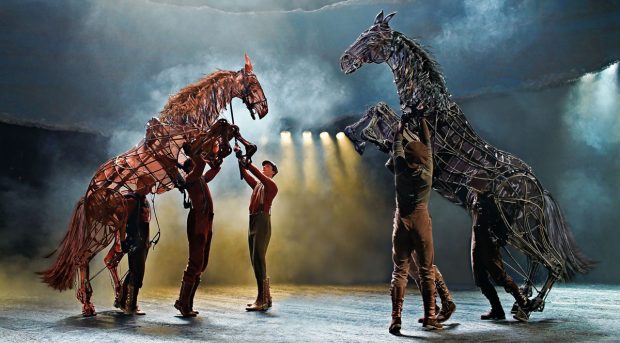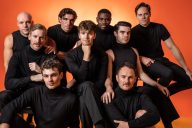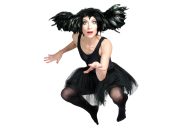War Horse has brought a lump to the throat for audiences worldwide. Australia, get out the tissues, because it’s cantering back to our shores.
When Michael Morpurgo, the author of the children’s novel War Horse, first heard his story would be adapted for the stage, he said, “They must be mad!” But the play’s success is an understatement, having won multiple accolades including the prestigious Drama Desk and Laurence Olivier Awards, as well as five Tonys.
While an Australian production ran in 2012 at the Melbourne State Theatre, with local actors and puppeteers, the National Theatre of Great Britain is bringing the renowned original to Melbourne, Sydney and Perth for a 2020 season.
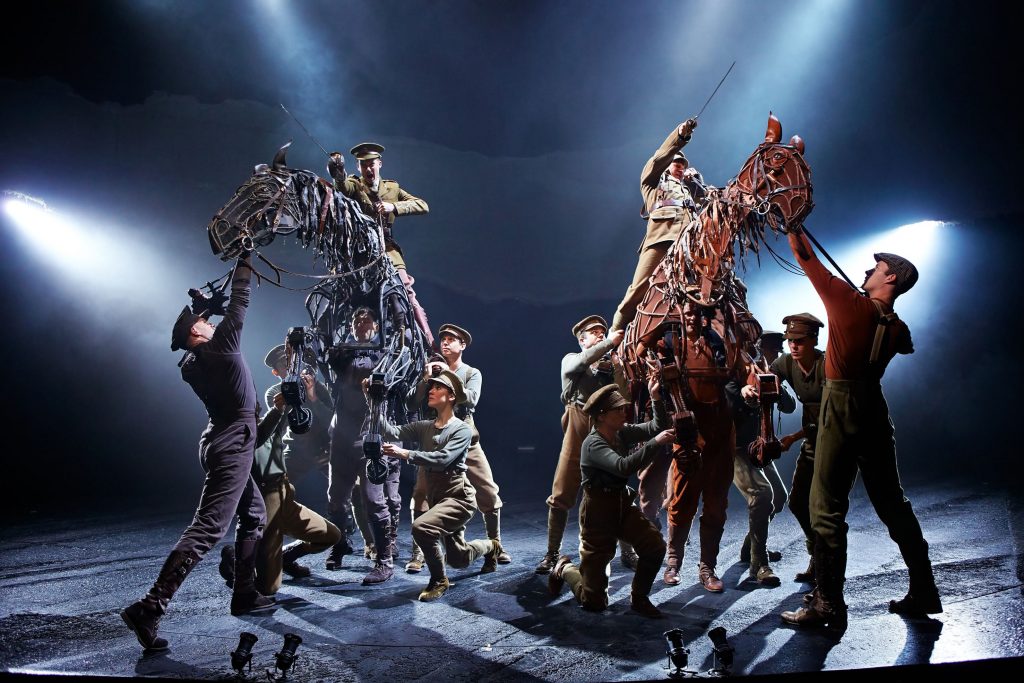
A scene from the stage production of War Horse
Directed byMarianne Elliott and Tom Morris, War Horse is set at the outbreak of WWI, where Joey, the beloved horse of young Devon country boy Albert, is sold to the British cavalry and transported to France. When Joey is eventually lost in the midst of ‘no man’s land’, Albert determined to find his horse, embarks on a perilous journey.
For Scott Miller, playing the role of Albert is both challenging and emotional, as his horse, a cane, leather and aluminum clad controlled puppet, takes on a life of its own, even bedazzling the cast.
“It’s very much like working with a real horse,” says Miller.
“The puppeteers are that good at it! I’m not a puppeteer myself, but in a way I feel like one, because I also have to make it believable. The guys are so detailed in their movements, like how the flex the ears and tail, right down to how Joey stamps his hoof.”
“I can feel the audience emotion at the very start of the play.”
Considering how audiences around the world view Joey as a realistic and believable life-size horse, one has to wonder if the actor forgets there are three puppeteers underneath.
“Every single night!” says Miller.
“The guys make me forget it’s a puppet. There’s always an element of stagecraft in what we do, but there’s also a huge element of surprise. I work with different teams of puppeteers, so I actually get a different horse each night. The experience is always changing for me and having different people working the horse keeps it fresh. It’s still the character of Joey, but played through someone else. It’s like someone else playing my role of Albert. We’re telling the same story, but the performance is very unique to each actor. It’s a wonderful opportunity to be a part of that every night.”
For the audience, the chemistry between man and beast becomes incredibly real and their reaction it’s something that Miller picks up on.
“I can feel the audience emotion at the very start of the play,” he says.
“In the beginning, Joey doesn’t trust anyone, but then I feed him, gently touch his back and I name him. I always know that at that moment the audience see Joey relaxing and feeling safe, and are totally onboard with myself, and Joey’s friendship. I completely feel the audience’s emotion.”
For any actor, preparation is key and taking on the role of a young horseman gave Miller the chance to emerge himself in the real world of horses.
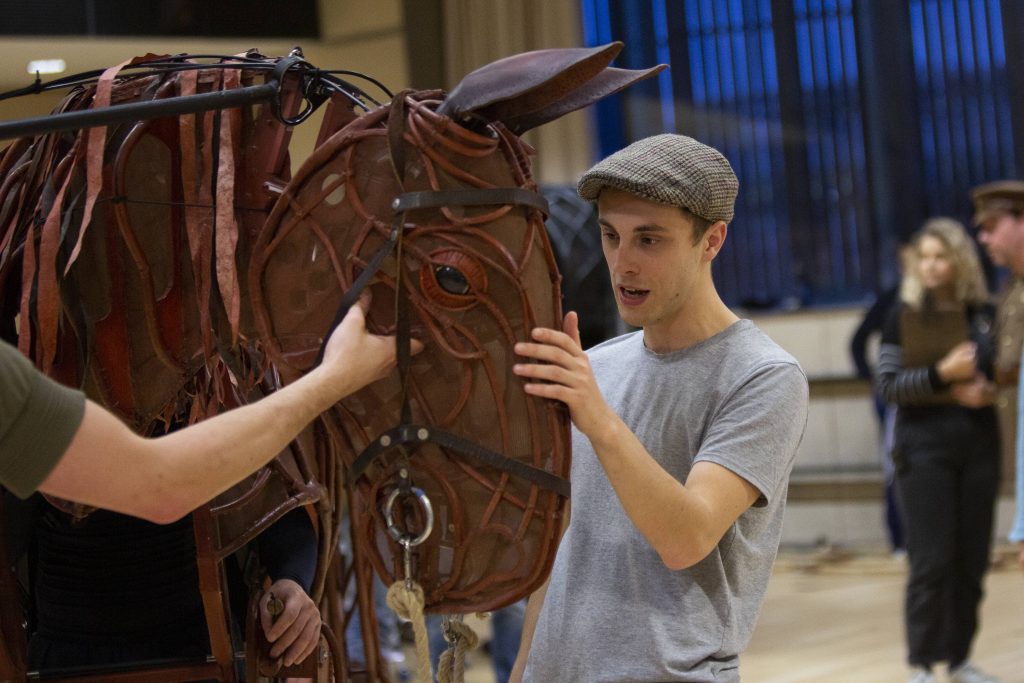
Scott Miller plays Albert in War Horse
“The first real horse I was ever actually on, was during our first week of rehearsals,” he says.
“We went to a stable and got to see horses being groomed, and we learnt everything from what they snack on, to how to approach them. I also got to ride, which was a great experience because I had never done that before.”
But even on stage, working with a puppet horse can be just as intricate and challenging at the real thing. For Miller, there’s a challenge every performance due to the effort and emotional stress that comes from a story steeped in emotion itself. Then there is the physicality of riding a life size horse, or rather puppet!
“One of the biggest challenges is when I do a running jump onto Joey,” says Miller.
“Especially on double show days where I do it twice, and we also do it before a show to practice. I throw my legs up thinking, “Please Joey, you can do this!” The puppeteers have to trust me one hundred percent and visa versa. But jumping on and maneuvering about is nothing compared to what the guys are doing underneath me!”
“One of the biggest challenges is when I do a running jump onto Joey.”
Holding another pivotal role in the touring company is Resident Puppetry Director, Gareth Aled who originally worked the head of Joey in London. In his current role, Aled facilitates the work of all the puppeteers and puppets, which were created by the Handspring Puppet Company in Cape Town, South Africa.
“The company has that name because the life of the puppets springs directly from the puppeteer,” says Aled.
“We don’t apologise for the puppeteers being there or hide them in the shadows. It’s a simple and effective principle, where the audience just forgets that they exist and start believing in these individual characters. Joey is a full-size horse puppet with three performers creating one character. There’s a head, heart and hind puppeteer, all with a technical path and an emotional indicator. The head puppeteer maintains the head at height, with the suggestion of eye line. We’re so observant of the eye line between humans and animals, and where the horse looks really is key in conveying character and story. To portray the emotion, it’s exactly like bicycle break levers where the head has two lead triggers operating the ears individually. Ears pinned back can suggest fear or agitation, soft and forward is more passive and inquisitive. I used to puppeteer the head of Joey, when the play was in London’s West End and it’s the most unique experience, but it’s the work of the puppeteers in part, that makes the play so moving. It’s really fantastic to witness every evening.”
For the puppeteers, whose work can also be witnessed along with a cast of 42, another horse called Topthorn and an equally lifelike goose, bringing life to the characters also includes creating breath, as Aled explains.
“The heart puppeteer holds the font legs and articulates the curving of hoofs. When the knees bend it feels like breath, and all of our puppets breathe,” he says.
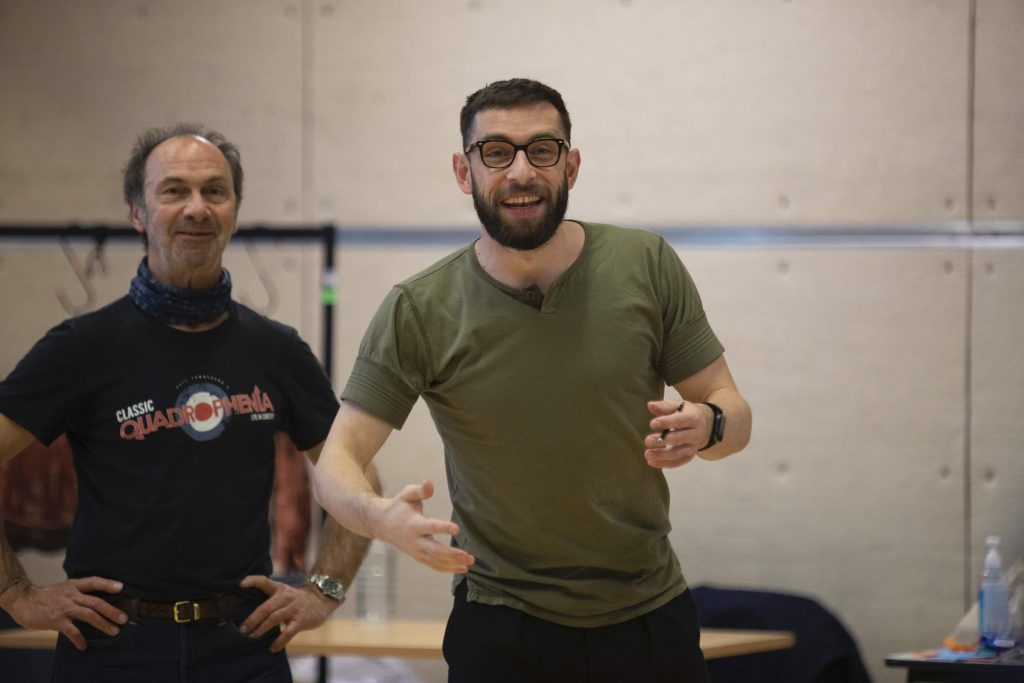
Gareth Alred oversees the puppetry on War Horse
“If we can convince you that something is breathing, then we suggest it is living. If we convince you of life, then the rhythm of the breath will also convince you of the puppet’s emotional state. Likewise, the hind puppeteer is also inside the cage controlling the back legs of the horse, and bicycle break leavers operate the tail, giving a lot of emotional vocabulary. They also maintain the gait of the horse to walk, trot or gallop and each gait has a rhythmic stroke for each puppeteer. It’s such a huge theatrical endeavour, which comes down to a lot of trust and listening. It’s really the most unique thing.”
Since opening in 2007, reviews for War Horse have been nothing but uplifting, with The Times exclaiming it’s “So exhilarating that it makes you rejoice to be alive”. War Horse really does have a special magic, which stems from the British National Theatre’s creative collaboration, and a puppet horse to which they bring a soul.
“If we can convince you that something is breathing, then we suggest it is living.”
“The play begins when Joey as a foal, is taken away from his mother and thrown into an auction pen,” say Aled.
“So as an audience, you go on a journey where you start to believe in the life of this vulnerable horse. At first you see there are people operating him, but you slowly forget they exist. The audience starts to invest in the relationship between Joey and Albert, who grows up with, and falls in love with the horse.”
It would be fair to say that War Horse has become a modern classic. Productions have taken place in the US, Canada, Germany, the Netherlands, South Africa and China. In 2011 it was made into a film by Steven Spielberg, with Jeremy Irvine (Stonewall) in his debut role. It was also a young Kit Harington who played the original Albert before going on to further fame as Game of Throne’s Jon Snow.
War Horse is so popular its audience has included the Queen, Princes William and Harry, George Lucas, Cate Blanchett, Hugh Jackman and Madonna. Over eight million have seen it worldwide.
“Since I’ve taken on the resident role, I’ve been trying to figure out why this play is so successful and has the impact it does,” says Aled.
“It’s an important story to tell, it’s the backdrop of the First World War and it feels like essential storytelling. Each individual component of the production weaves the narrative and somehow it all works together. Even if there are some dark themes, it’s very emotional. It’s a play about hope, love and community, with lots of innocence and courage. I think it will stay with people for a long time.”
For Miller, the relationship between Albert and Joey has a great significance. He feels the powerful love and sentiment, which likewise resonates with the audience.
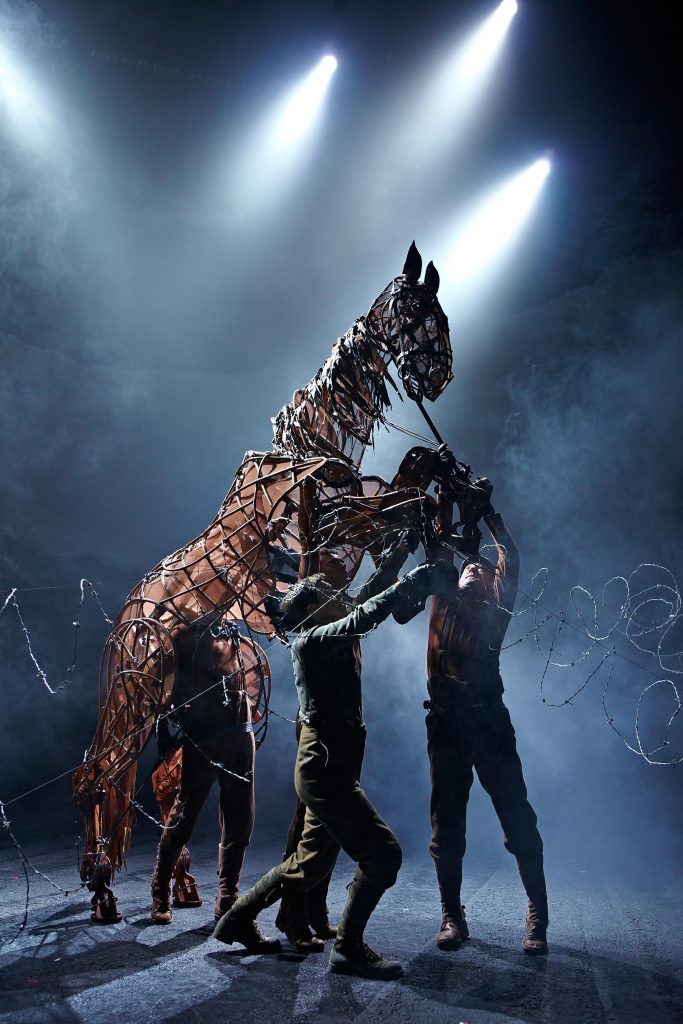
Puppeteers bringing their magic to War Horse
“It’s set in the war, but it’s not a story about war,” he says.
“As human beings, we all have relationships and for a lot of us that includes animals and pets, but it’s a different type of relationship. It brings something else out in us. War Horse is a story about love and friendship. It’s about determination and not giving up, and I hope it gives audiences a sense of that.”
War Horse opens 2020 at the Regent Theatre Melbourne 10 January, Lyric Theatre Sydney 15 February, and Crown Theatre Perth 24 March
For more visit: warhorseonstage.com.au

